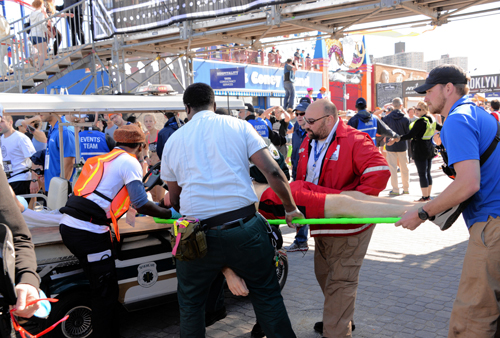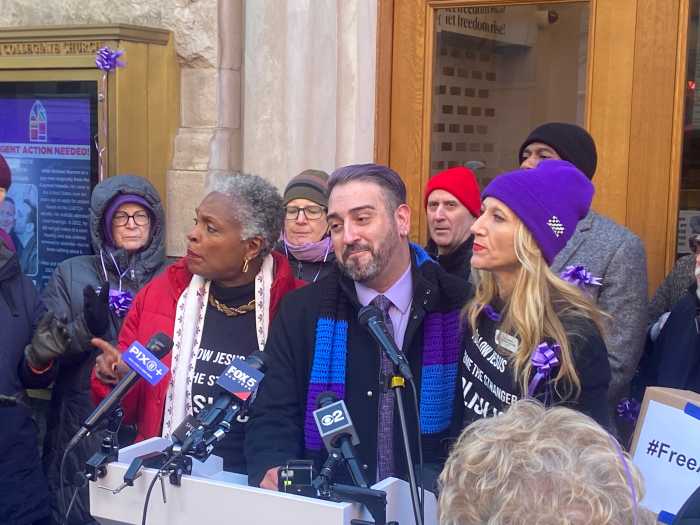The medical examiner’s office still has not completed the autopsy of the runner who collapsed at the finish line of the Brooklyn Half Marathon and died five months ago.
Thirty-one-year-old John Mahaffey fell to the Coney Island Boardwalk on May 17, having completed the 13.1-mile run, and never regained his footing. Three-to-seven minutes elapsed between his fall and race staffers transporting him away on a golf cart, and in that time those attending to him stroked his arm and reassured him but did not perform CPR or make use of defibrillators, the devices that send a jolt to the heart to restore a normal heartbeat.
Medical examiner officials declined to discuss the specifics of the autopsy process, but said that some investigations take longer than others, especially ones involving the death of a young person with no known preexisting conditions, as they said was the case with Mahaffey.
A rep from the Philadelphia health department said his city’s coroner completes most autopsies within a couple of days, but that some cases can take weeks or months. The time frame on Mahaffey’s case is odd but not outlandish, he said.
“It’s unusual but it’s not unheard of,” said James Garrow, a health department spokesman. “And this sounds like an unusual case.”
By comparison, the New York medical examiner released the autopsy results in the case of Gowanus native Eric Garner, ruling that he died on Staten Island as the result of a police officer’s chokehold, in just two weeks.
The Brooklyn Half Marathon’s organizer, the New York Road Runners, declined to provide details about the treatment provided for Mahaffey at the scene and who administered it, citing the family’s privacy. The organization declined to comment for this story, and for previous stories about the moments leading to Mahaffey’s death.
Records from the race provided by the state health department in response to a public records request were heavily redacted — even the total number of deaths at the half marathon was blacked out — and offered no insight into how his case was handled.
In a field on an event reporting form for explaining “Unusual Occurrences/Comments,” race organizers wrote “none.”
A letter explaining the redactions said the access to the records would result in an “unwarranted invasion of privacy” and additional records were withheld completely, with the state citing the Health Insurance Portability and Accountability Act patient privacy rule.
Other documents from the state show that the Runners operated nine sheltered outposts along the race route and a full medical tent at the finish line. The group also had 19 ambulances on standby for the race. This far exceeds minimum state requirements for an event of the Half Marathon’s size (more than 25,000 runners participated).
A 57-year-old man who collapsed during a Road Runners half marathon on Staten island last weekend survived after nearby police officers administered CPR and defibrillators, the Staten Island Advance reported.
Time is crucial when it comes to the treatment of runners at a long-distance road race. For every minute delay in starting chest compressions on a cardiac arrest victim, the survival rate drops ten percent, according to Adam Singer, a professor in the Department of Emergency Medicine at Stony Brook University.
The New York morgue has been plagued by botched body-handling incidents in recent months, having mistakenly cremated two men’s remains, sent an 85-year-old woman’s corpse to a medical school for dissection, against her family’s wishes, and lost the body of a 71-year-old woman, the New York Post reported.


























